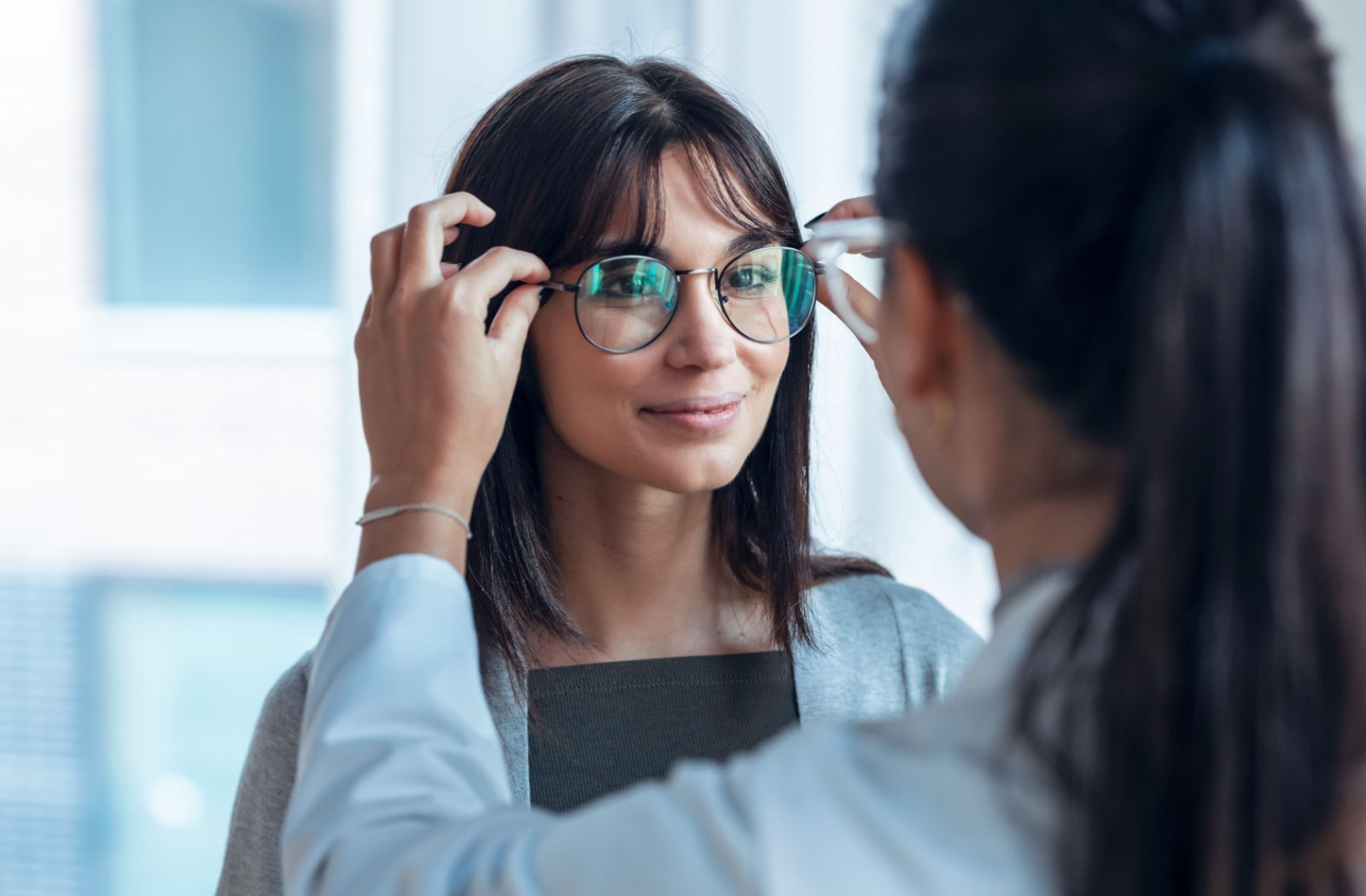Find a Trusted Optometrist Chino for Household Eye Treatment Solutions
Find a Trusted Optometrist Chino for Household Eye Treatment Solutions
Blog Article
Discovering the most up to date Technical Developments in Optometry and What They Mean for Optometrists
In the ever-evolving field of optometry, recent technological advancements are reshaping just how professionals approach eye treatment. From the precision of Optical Coherence Tomography to the nuanced insights offered by AI-driven diagnostic tools, these technologies are setting brand-new requirements in client assessment and therapy. Teleoptometry is positioned to redefine ease of access, making certain that proficiency transcends geographical constraints. As these improvements penetrate the method, eye doctors are confronted with the challenge of embracing these devices to boost individual results. Yet, the question continues to be: just how will these technological changes redefine the roles and responsibilities within the profession?
Technologies in Diagnostic Tools
Progressing the area of optometry, advancements in analysis tools have changed the means eye treatment professionals evaluate and identify visual problems and eye conditions. The previous decade has actually observed significant technological innovations, enabling more accurate and extensive evaluations.
An additional trick innovation is the introduction of sophisticated corneal topography systems, which map the surface curvature of the cornea with accuracy. These tools are especially helpful for fitting get in touch with lenses and identifying corneal problems. In addition, electronic retinal imaging has transformed standard ophthalmoscopy, providing thorough, panoramic views of the retina that facilitate comprehensive visual exams.
The advancement of wavefront aberrometry has actually likewise been crucial, making it possible for the analysis of refractive errors with unparalleled precision (Eye Doctor Optometrist). This technology aids in customizing restorative lenses and enhancing medical results for refractive surgical treatments. Collectively, these analysis developments encourage eye doctors to deliver exceptional client care, making sure very early intervention and tailored therapy methods, ultimately boosting visual wellness results
AI in Individual Monitoring
Building on the foundation of cutting-edge analysis devices, the consolidation of man-made intelligence (AI) in patient management stands for a transformative leap for optometry. AI systems are increasingly employed to improve performance, accuracy, and customization in person treatment.
In addition, AI-driven platforms assist in streamlined patient interactions and administrative processes. Automated organizing, online assessments, and individualized follow-up plans not only improve person complete satisfaction but also enhance time monitoring for practitioners. These systems can triage individuals based on the seriousness of their conditions, making sure that those in vital requirement obtain prompt attention.
In addition, AI improves decision-making by giving eye doctors with evidence-based referrals and treatment paths. By integrating information from digital wellness records, AI tools provide understandings that educate professional decisions, decreasing the threat of errors and boosting patient end results. As AI continues to progress, its duty in patient administration will likely expand, improving the landscape of optometric treatment.
Breakthroughs in Retinal Imaging
In the realm of optometry, retinal imaging has witnessed remarkable technical developments that are improving analysis capacities and client care. Technologies such as Optical Comprehensibility Tomography (OCT) and fundus digital photography have changed how eye doctors picture and examine the retina.
Improved imaging methods like OCT angiography are additional refining analysis accuracy. This non-invasive technique maps blood flow in the retina, using essential insights into vascular wellness without the requirement for color shots. Additionally, flexible optics modern technology is being integrated into retinal imaging systems to fix ocular aberrations, supplying extraordinary photo clearness. Such improvements promote the recognition of minute retinal modifications that could symbolize disease progression.
In addition, innovations in expert system are boosting retinal imaging by enabling computerized evaluation of big datasets. These systems assist eye doctors in recognizing patterns a sign of pathology, therefore improving diagnostic precision and performance. Jointly, these advancements are transforming retinal imaging into a foundation of modern-day eye treatment, improving outcomes and increasing restorative possibilities.
Teleoptometry's Expanding Role
Teleoptometry is progressively becoming a vital component of eye treatment, driven by developments in data and analysis devices. As optometry embraces electronic makeover, teleoptometry assists in remote examinations, enabling eye doctors to prolong their solutions beyond typical limits. This is particularly advantageous in underserved and country areas where accessibility to specialized eye treatment is often restricted. By leveraging high-resolution video conferencing and progressed retinal imaging, eye doctors can carry out Continued extensive eye examinations from afar, ensuring timely medical diagnosis and therapy.
The assimilation of fabricated intelligence (AI) more boosts teleoptometry, making it possible for the analysis of aesthetic data and aiding in the discovery of ocular conditions such as glaucoma and diabetic person retinopathy. AI-powered algorithms can rapidly interpret complicated imaging data, giving optometrists with valuable insights that boost professional decision-making.
Moreover, teleoptometry supports continuity of treatment with seamless assimilation with view electronic health and wellness records (EHRs), allowing optometrists to preserve detailed person backgrounds. This ensures that patients receive constant and individualized treatment also when seeking advice from various experts.
In spite of these benefits, obstacles continue to be, consisting of making sure information security and managing patient expectations. Teleoptometry stands for a considerable stride in the direction of even more obtainable, reliable, and patient-centered eye treatment. As technology evolves, its role is positioned to expand better.

Future Fads in Eye Treatment
A myriad of innovative fads is established to reshape the future of eye treatment, driven by technological innovations and the progressing demands of clients. One substantial fad is the integration of synthetic intelligence (AI) in diagnostics, which assures to improve the precision and effectiveness of eye assessments. AI formulas can assess huge amounts of information from retinal photos, potentially discovering problems like diabetic retinopathy and glaucoma earlier than typical methods.
Additionally, individualized medicine is gaining grip in optometry, with hereditary screening informing tailored treatment strategies. This method intends to enhance patient outcomes by customizing interventions to specific hereditary profiles. Wearable innovation, such as wise get in touch with lenses, is likewise imminent, supplying real-time surveillance of intraocular stress or sugar levels, hence supplying constant understandings right into eye and systemic health and wellness.
The fostering of augmented fact (AR) and digital truth (VIRTUAL REALITY) in training and client education is one more emerging trend. These innovations offer immersive experiences that can improve understanding and skills both for people and optometrists. As these patterns progress, eye doctors have to stay abreast of technological advancements to provide cutting-edge treatment, guaranteeing improved client outcomes and fulfillment in the vibrant landscape of eye care.
Final Thought

Jointly, these diagnostic advancements encourage eye doctors to provide superior patient treatment, making certain very early intervention and tailored treatment strategies, eventually enhancing aesthetic health end results.

As these modern technologies proceed to progress, eye doctors should adapt and incorporate them right into method, ultimately maximizing process effectiveness and boosting the requirement of eye care provided to individuals.
Report this page